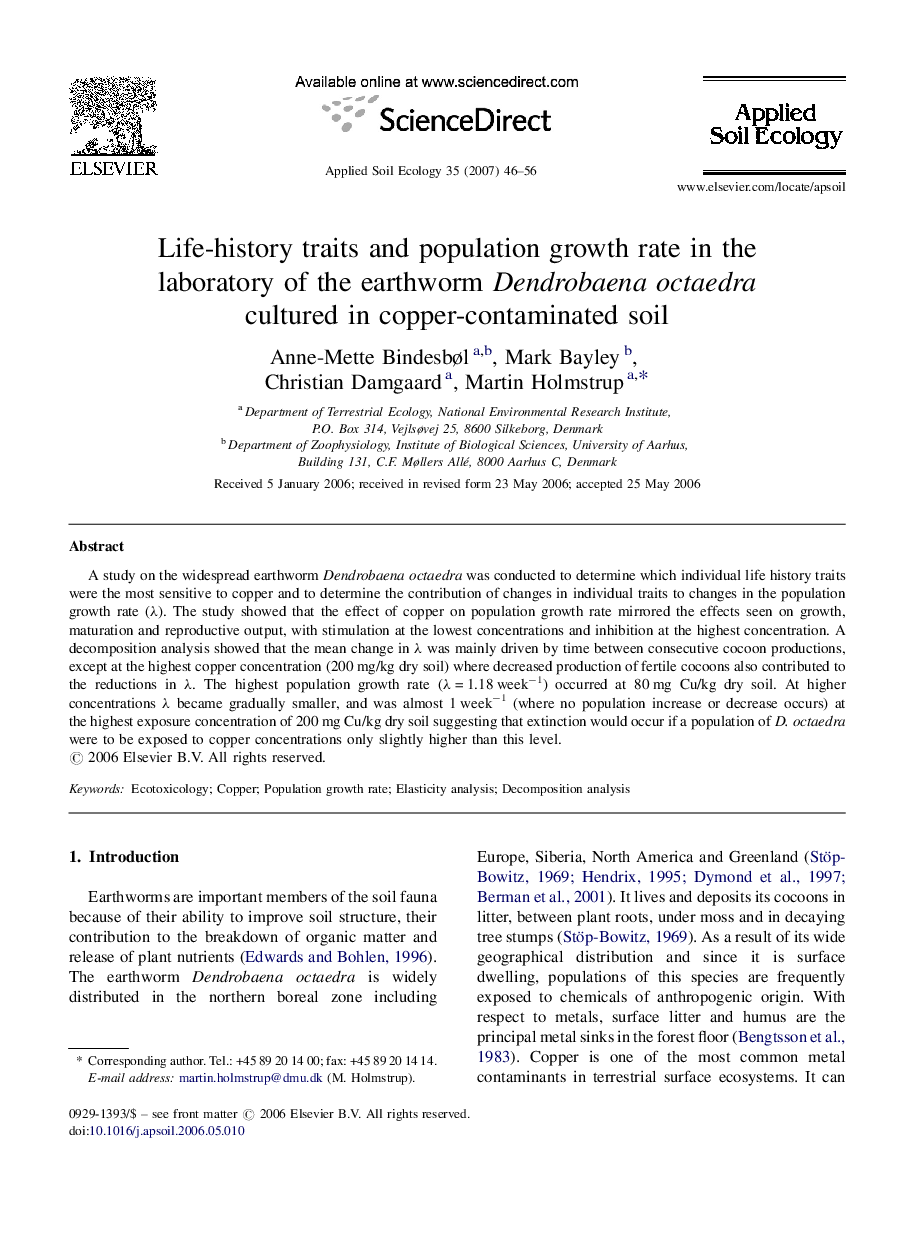| Article ID | Journal | Published Year | Pages | File Type |
|---|---|---|---|---|
| 4383520 | Applied Soil Ecology | 2007 | 11 Pages |
Abstract
A study on the widespread earthworm Dendrobaena octaedra was conducted to determine which individual life history traits were the most sensitive to copper and to determine the contribution of changes in individual traits to changes in the population growth rate (λ). The study showed that the effect of copper on population growth rate mirrored the effects seen on growth, maturation and reproductive output, with stimulation at the lowest concentrations and inhibition at the highest concentration. A decomposition analysis showed that the mean change in λ was mainly driven by time between consecutive cocoon productions, except at the highest copper concentration (200 mg/kg dry soil) where decreased production of fertile cocoons also contributed to the reductions in λ. The highest population growth rate (λ = 1.18 weekâ1) occurred at 80 mg Cu/kg dry soil. At higher concentrations λ became gradually smaller, and was almost 1 weekâ1 (where no population increase or decrease occurs) at the highest exposure concentration of 200 mg Cu/kg dry soil suggesting that extinction would occur if a population of D. octaedra were to be exposed to copper concentrations only slightly higher than this level.
Related Topics
Life Sciences
Agricultural and Biological Sciences
Ecology, Evolution, Behavior and Systematics
Authors
Anne-Mette Bindesbøl, Mark Bayley, Christian Damgaard, Martin Holmstrup,
